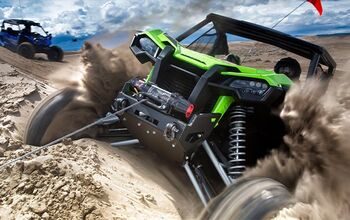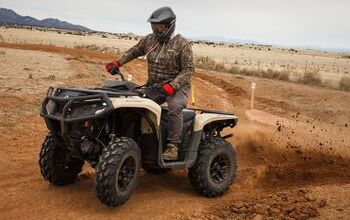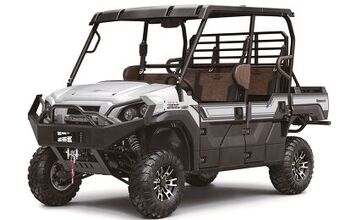Electric UTVs and Innovation: Is EV Leading the Charge in Off-Roading?
While UTVs started as primarily gas-powered off-road machines, they have expanded into a broader category, including high-performance electric models. Electric UTVs are rapidly gaining attention as manufacturers focus on improving battery technology, increasing range, and boosting torque. These innovations are not only appealing to adrenaline-seekers but also to eco-conscious riders looking for sustainable off-road solutions. As the technology evolves, electric UTVs are becoming a serious contender in the world of off-roading. The electric UTV market is forecasted to grow at a rate of over 12% annually as off-road enthusiasts shift towards more sustainable options.
High-Torque Motors and Off-Road Performance
Electric UTVs benefit significantly from high-torque electric motors delivering immediate power and acceleration. These motors have transformed the driving experience, making electric UTVs capable of handling everything from tough trails to demanding work environments.
Unlike internal combustion engines, which require acceleration to a peak torque RPM, electric motors provide torque immediately at any speed, including a stop, resulting in quick and responsive performance. The smooth power distribution from electric motors also enhances traction, especially on loose or slippery surfaces, giving riders more control during off-road maneuvers. With fewer moving parts and no need for oil changes or engine tune-ups, electric UTVs are generally easier and cheaper to maintain than their gas-powered counterparts.
Adaptive Suspension Systems for Electric UTVs
Adaptive suspension systems are becoming a key feature in the latest electric UTV models, significantly improving ride quality and handling. These systems adjust the vehicle's suspension settings in real time to match the terrain, providing a smoother and more controlled experience.
The adaptive suspension technology senses changes in the trail and automatically adjusts damping settings, optimizing performance for high-speed driving and rugged terrain. Riders can fine-tune the suspension to their preferences, whether they’re seeking a cushy ride on rough trails or a stiffer setup for aggressive driving.
Innovations in Battery Technology
Lithium-ion batteries have been a cornerstone of electric UTV development. With increased energy density over traditional lead acid batteries, today's lithium-ion batteries can power UTVs for longer distances, making them suitable for extended outdoor adventures and work tasks. They weigh less, improving performance, and there is no risk of battery acid leakage like there was in older batteries. Modern lithium-ion batteries offer significantly reduced charging times, meaning riders can spend more time on the trail and less time waiting for a recharge. New thermal management systems help prevent overheating, extending battery life and ensuring safety during high-performance riding.
While still in the early stages of commercialization, solid-state batteries are expected to revolutionize electric UTVs by offering several crucial advantages over their lithium-ion counterparts. Solid-state batteries can store more power in a smaller space, enabling UTVs to achieve greater distances on a single charge without adding bulk. Solid-state batteries could potentially double the range of electric UTVs compared to current lithium-ion options. The advanced chemistry of solid-state technology promises even quicker recharges, which is crucial for users who require continuous vehicle uptime. These batteries are more stable and lower the risk of overheating or catching fire, making them ideal for the rugged and demanding conditions UTVs often face.
Environmental Benefits and Sustainability
Electric UTVs offer a cleaner alternative to traditional models by producing zero emissions and running almost silently. This reduced environmental impact makes them ideal for environmentally sensitive areas and communities focused on sustainable outdoor activities.
Eliminating exhaust fumes means a smaller carbon footprint and a better-preserved environment, aligning with growing sustainability goals. Electric UTVs run almost noiselessly compared to their gas counterparts, making them perfect for hunters, nature enthusiasts, and anyone who values a quieter ride. They operate at around 60 decibels, compared to 90+ decibels for most gas-powered models, reducing trail noise significantly.
Leading Electric UTV Models
Manufacturers are pushing the envelope with electric UTV models that are both practical and powerful. Here are some of the leading electric UTVs making waves in the industry:
- Polaris RANGER XP Kinetic: This Polaris model, in their popular RANGER lineup, replaces the typical gas engine with an electric powertrain that delivers 110 horsepower and 140 lb-ft of torque, making it ideal for work and play.
- Landmaster AMP: Available in standard and quad cab configurations, the AMP is a low-maintenance, versatile option that can be utilized indoors and outdoors.
- Hisun Sector E1: Made in Texas, this versatile and affordable electric UTV is designed for utility and recreational use, offering reliable performance for a wide range of off-road conditions.
Conclusion
Electric UTVs are at the forefront of innovation in the off-road industry, driven by advancements in battery technology, high-torque motors, and adaptive suspension systems. These vehicles offer the perfect blend of performance, sustainability, and versatility, appealing to both hardcore off-roaders and those looking for a cleaner way to enjoy the outdoors. As technology continues to advance, electric UTVs will undoubtedly play a major role in shaping the future of off-road adventures.
More by ATV.com Staff



































Comments
Join the conversation